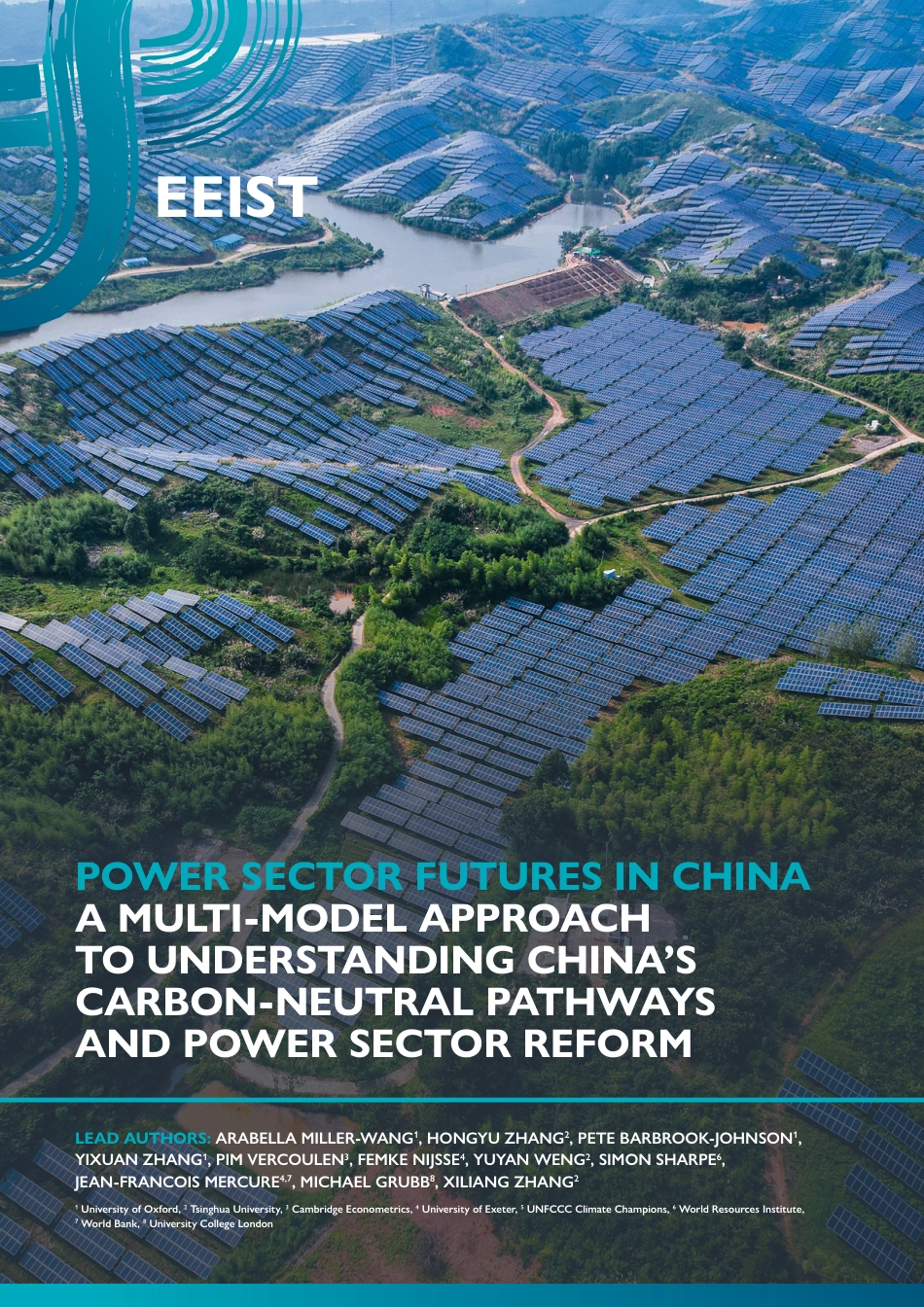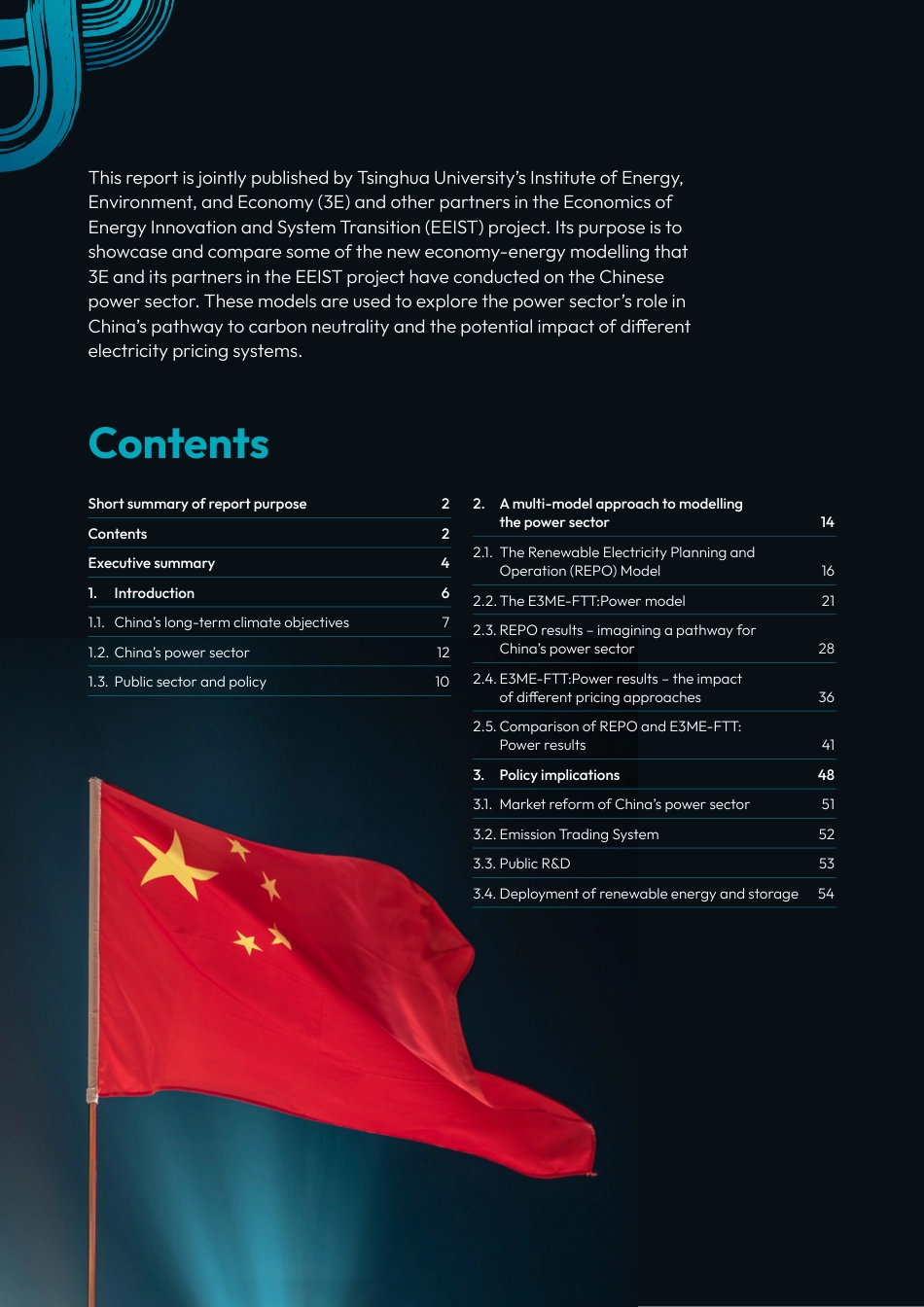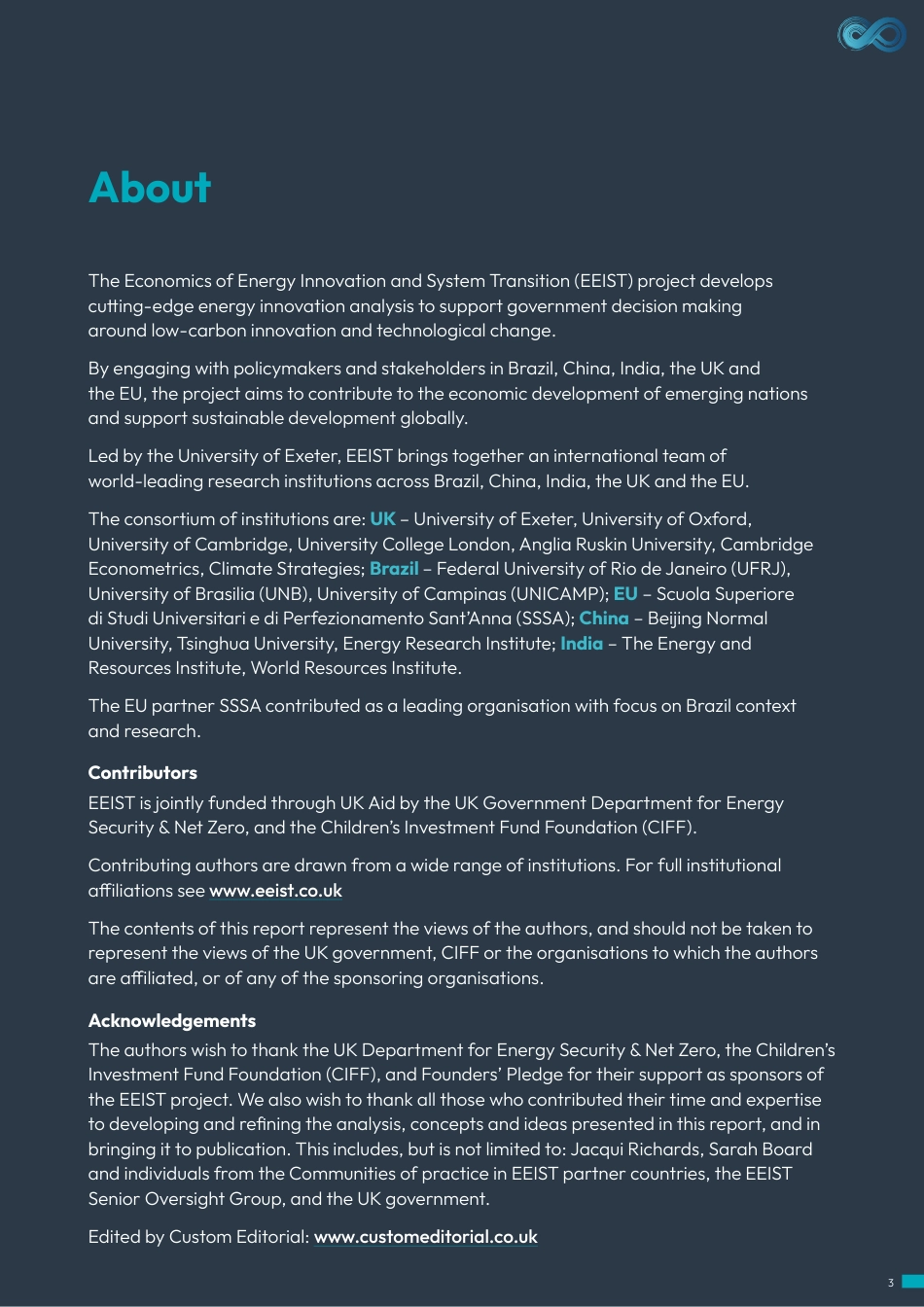EEISTPowErSEcTorfuTurESInchInaamulTI-modElaPProachToundErSTandIngchIna’Scarbon-nEuTralPaThwaySandPowErSEcTorrEformlEadauThorS:ArAbellAMiller-WAng1,HongyuZHAng2,PetebArbrook-JoHnson1,yixuAnZHAng1,PiMVercoulen3,FeMkeniJsse4,yuyAnWeng2,siMonsHArPe6,JeAn-FrAncoisMercure4,7,MicHAelgrubb8,xiliAngZHAng21universityofoxford,2tsinghuauniversity,3cambridgeeconometrics,4universityofexeter,5unFcccclimatechampions,6Worldresourcesinstitute,7Worldbank,8universitycollegelondonShortsummaryofreportpurpose2Contents2Executivesummary41.Introduction61.1.China’slong-termclimateobjectives71.2.China’spowersector121.3.Publicsectorandpolicy102.Amulti-modelapproachtomodellingthepowersector142.1.TheRenewableElectricityPlanningandOperation(REPO)Model162.2.TheE3ME-FTT:Powermodel212.3.REPOresults–imaginingapathwayforChina’spowersector282.4.E3ME-FTT:Powerresults–theimpactofdifferentpricingapproaches362.5.ComparisonofREPOandE3ME-FTT:Powerresults413.Policyimplications483.1.MarketreformofChina’spowersector513.2.EmissionTradingSystem523.3.PublicR&D533.4.Deploymentofrenewableenergyandstorage54ContentsThisreportisjointlypublishedbyTsinghuaUniversity’sInstituteofEnergy,Environment,andEconomy(3E)andotherpartnersintheEconomicsofEnergyInnovationandSystemTransition(EEIST)project.Itspurposeistoshowcaseandcomparesomeoftheneweconomy-energymodellingthat3EanditspartnersintheEEISTprojecthaveconductedontheChinesepowersector.Thesemodelsareusedtoexplorethepowersector’sroleinChina’spathwaytocarbonneutralityandthepotentialimpactofdifferentelectricitypricingsystems.3AboutTheEconomicsofEnergyInnovationandSystemTransition(EEIST)projectdevelopscutting-edgeenergyinnovationanalysistosupportgovernmentdecisionmakingaroundlow-carboninnovationandtechnologicalchange.ByengagingwithpolicymakersandstakeholdersinBrazil,China,India,theUKandtheEU,theprojectaimstocontributetotheeconomicdevelopmentofemergingnationsandsupportsustainabledevelopmentglobally.LedbytheUniversityofExeter,EEISTbringstogetheraninternationalteamofworld-leadingresearchinstitutionsacrossBrazil,China,India,theUKandtheEU.Theconsortiumofinstitutionsare:UK–UniversityofExeter,UniversityofOxford,UniversityofCambridge,UniversityCollegeLondon,AngliaRuskinUniversity,CambridgeEconometrics,ClimateStrategies;Brazil–FederalUniversityofRiodeJaneiro(UFRJ),UniversityofBrasilia(UNB),UniversityofCampinas(UNICAMP);EU–ScuolaSuperiorediStudiUniversitariediPerfezionamentoSant’Anna(SSSA);China–BeijingNormalUniversity,TsinghuaUniversity,EnergyResearchInstitute;India–TheEnergyandResourcesInstitute,WorldResourcesInstitute.TheEUpartnerSSSAcontributedasaleadingorganisationwithfocusonBrazilcontextandresearch.ContributorsEEISTisjointlyfundedthroughUKAidbytheUKGovernmentDepartmentforEnergySecurity&NetZero,andtheChildren’sInvestmentFundFoundation(CIFF).Contributingauthorsaredrawnfromawiderangeofinstitutions.Forfullinstitutionalaffiliationsseewww.eeist.co.ukThecontentsofthisreportrepresenttheviewsoftheauthors,andshouldnotbetakentorepresenttheviewsoftheUKgovernment,CIFFortheorganisationstowhichtheauthorsareaffiliated,orofanyofthesponsoringorganisations.AcknowledgementsTheauthorswishtothanktheUKDepartmentforEnergySecurity&NetZero,theChildren’sInvestmentFundFoundation(CIFF),andFounders’PledgefortheirsupportassponsorsoftheEEISTproject.Wealsowishtothankallthosewhocontributedtheirtimeandexpe...



 VIP
VIP VIP
VIP VIP
VIP VIP
VIP VIP
VIP VIP
VIP VIP
VIP VIP
VIP VIP
VIP VIP
VIP